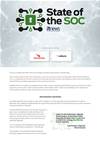
Backus was working at IBM when he developed Fortran (a name derived from The IBM Mathematical Formula Translating System) in 1954 to run on IBM's first mass produced computer, the 704.
However, in common with much of the early IT industry, the manuals were not produced until 1956.
Fortran became popular because it used advanced compiler technology that allowed the programmer to use a combination of mathematical terms and shorthand to develop lines of code automatically.
Members of the original team described the development process in terms that would remind many of the early days of internet companies.
Marathon programming sessions were frequently interrupted by breaks for snowball fights, and Backus ignored the IBM policy of rigid performance reviews.
Backus originally trained as a chemist, and was a US Army medic after being drafted, but after having a brain tumour removed he dropped out and moved to New York.
Backus began to study mathematics and graduated from Cornell in 1949, joining IBM a year later.
Initially he worked on programming Poppa, or the IBM SSEC, which boasted a storage capacity of 40Kb. His programs were designed to predict the distance to the moon and the data was later used for the Apollo moon mission.
After working on Fortran, Backus spent much of his time developing a function-level programming language known as FP, many of the ideas for which were used in the J programming language.
FP was based around the idea of telling the computer what problem needed solving rather than giving step-by-step instructions.
Backus won the 1977 Turing Prize for "profound, influential and lasting contributions to the design of practical high-level programming systems, notably through his work on Fortran, and for seminal publication of formal procedures for the specification of programming languages".
In 1987 Backus became an IBM fellow and retired in 1991. He is survived by two daughters.

.png&h=140&w=231&c=1&s=0)


.png&h=140&w=231&c=1&s=0)
.png&w=100&c=1&s=0)




 Private AI vs Public AI: How your organisation can securely adopt AI without compromise and excessive cost
Private AI vs Public AI: How your organisation can securely adopt AI without compromise and excessive cost
 iTnews Benchmark Security Awards 2025
iTnews Benchmark Security Awards 2025
 Digital Leadership Day Federal
Digital Leadership Day Federal
 Government Cyber Security Showcase Federal
Government Cyber Security Showcase Federal
 Government Innovation Showcase Federal
Government Innovation Showcase Federal











.jpg&h=140&w=231&c=1&s=0)



